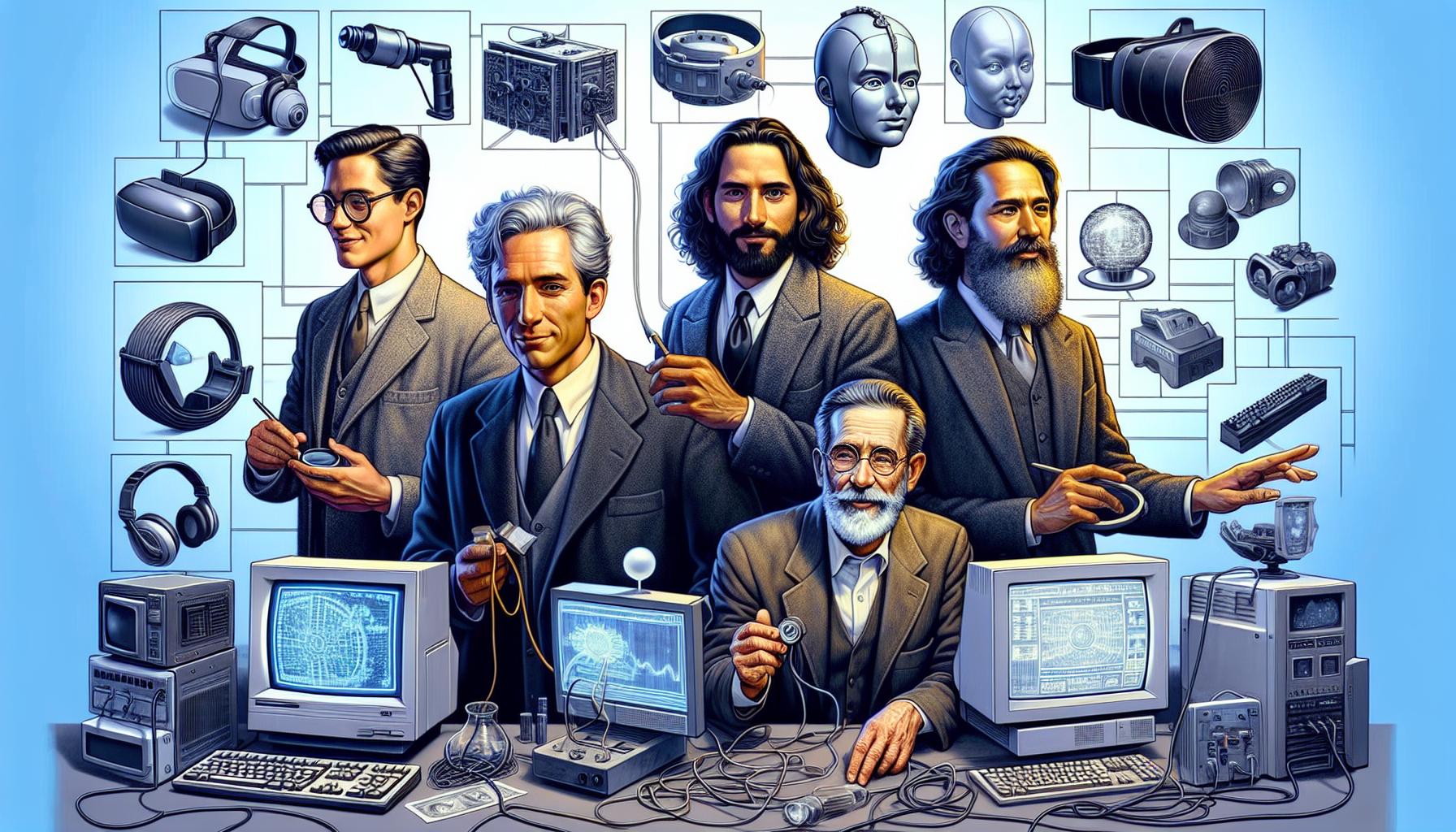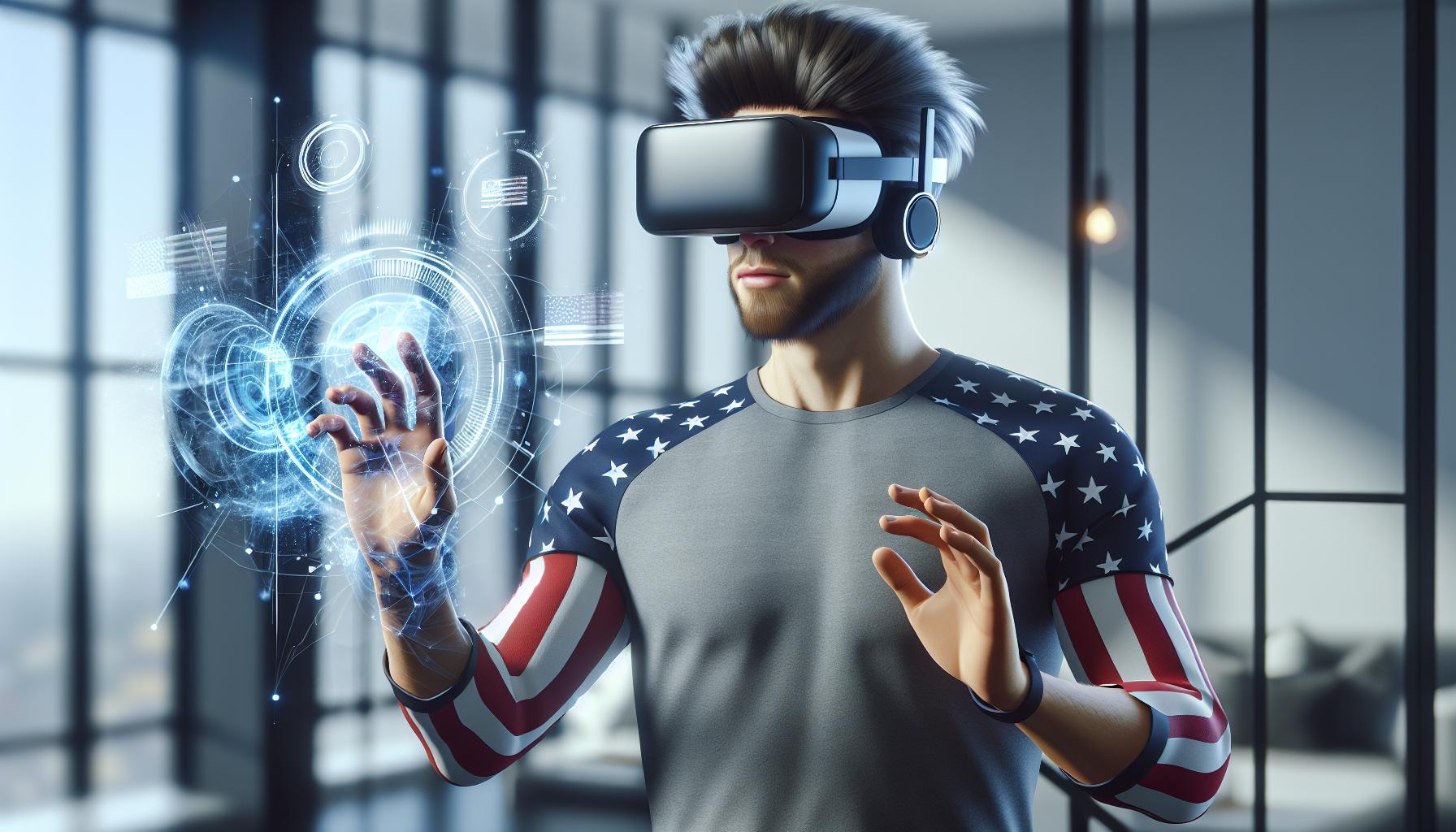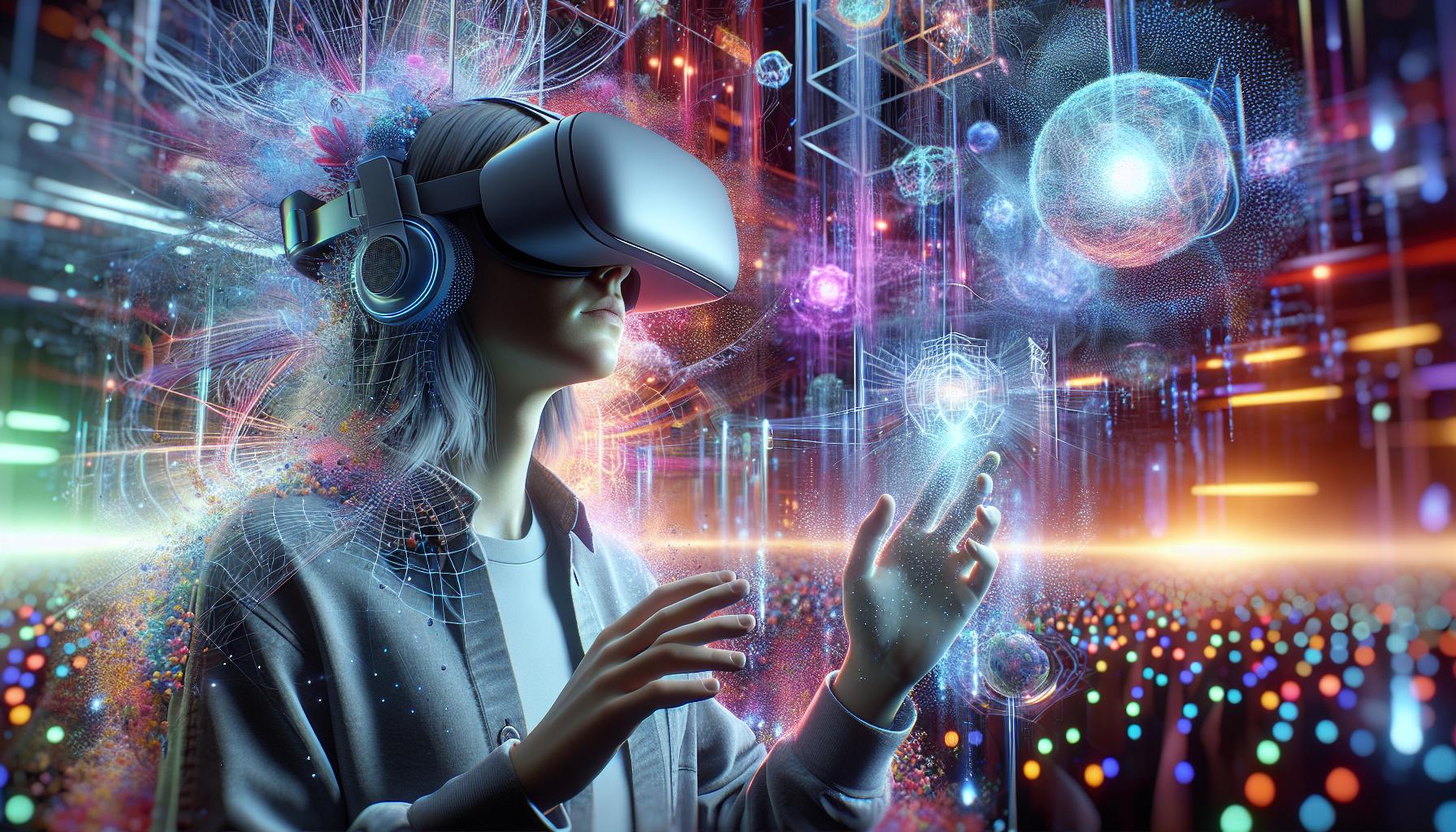Key Takeaways
- Historical Milestones: Virtual reality’s origins trace back to the 1950s and 1960s with groundbreaking innovations like Morton Heilig’s Sensorama and Ivan Sutherland’s Sword of Damocles, cementing its foundational concepts.
- Evolution Over Decades: The 1980s marked commercialization, while the 1990s saw attempts at consumer products, leading to significant advancements in VR technology from the 2000s onwards.
- Key Innovators: Key figures such as Jaron Lanier, Ivan Sutherland, and David McCall played pivotal roles in developing and popularizing virtual reality, influencing its trajectory and application.
- Cross-Industry Applications: VR has transformed multiple sectors including gaming, healthcare, education, real estate, and training, showcasing its versatility and potential impact.
- Future Developments: Emerging trends include advancements in hardware, integration of AI, enhanced social interaction in virtual environments, and increased accessibility, promising further evolution in VR technology.
Virtual reality has transformed the way people experience digital content, immersing them in environments that feel incredibly real. But when did this groundbreaking technology first emerge? The roots of virtual reality stretch back decades, intertwining with advancements in computer graphics, gaming, and human-computer interaction.
From early experiments in the 1960s to the revolutionary headsets of today, the journey of virtual reality is filled with innovation and imagination. Understanding its history not only highlights the technological milestones but also reveals the visionaries who dared to dream of a virtual world. Exploring these pivotal moments sheds light on how far we’ve come and what the future might hold for this captivating medium.
When Was Virtual Reality Invented
The origins of virtual reality (VR) trace back to innovative ideas and pioneering experiments in technology. Key developments in early concepts and experimental systems laid the groundwork for today’s immersive experiences.
Early Concepts and Theoretical Foundations
Early concepts of virtual reality emerged in the 1950s and 1960s as visionaries explored the potential of immersive environments. Notable contributions include Morton Heilig’s Sensorama in 1962, which combined multi-sensory experiences, and connected spatial awareness to immersive technologies. Additionally, Jaron Lanier’s work in the 1980s emphasized the importance of human-computer interaction, leading to the establishment of VR as a distinct field of study.
First Experimental Systems
The first experimental systems for virtual reality surfaced during the 1960s. The most prominent was the Sword of Damocles, created by Ivan Sutherland in 1968. This head-mounted display marked a significant milestone. It allowed users to interact with simple virtual graphics, laying the foundation for future advancements. Other early systems, like the Aspen Movie Map, debuted in 1978, providing users with a virtual tour of Aspen, Colorado, showcasing how visual experiences could simulate reality.
Key Milestones in Virtual Reality Development

Virtual reality has evolved through several crucial milestones, showcasing the contributions of innovators and advancements in technology.
The Contribution of Notable Innovators
- Morton Heilig: Heilig created the Sensorama in 1962, which delivered multi-sensory experiences, blending visuals, sound, and motion. This invention laid the foundation for immersive VR experiences.
- Ivan Sutherland: Sutherland’s Sword of Damocles, developed in 1968, is recognized as the first head-mounted display. It allowed interaction with rudimentary virtual graphics, marking a pivotal moment in VR history.
- Jaron Lanier: In the 1980s, Lanier popularized the term “virtual reality.” His work in human-computer interaction advanced the overall understanding of user engagement within virtual environments.
- David McCall: McCall’s work on the Aspen Movie Map in 1978 created a navigable virtual representation of Aspen, Colorado. It illustrated the potential for virtual environments to simulate real-world locations.
- Computer Graphics Development: The 1970s and 1980s saw breakthroughs in computer graphics technology that enabled the creation of more complex and realistic virtual environments.
- Virtual Reality Datagloves: Emerging in the late 1980s, datagloves allowed users to interact with virtual objects through hand movements, enhancing the immersive experience.
- Advances in Display Technology: Throughout the 1990s, significant improvements in display technology, including higher resolutions and wider fields of view, improved user experience in VR systems.
- Motion Tracking Systems: The introduction of accurate motion tracking systems in the 2000s allowed for more realistic user interactions within virtual environments, making experiences more engaging.
Evolution of Virtual Reality Through the Decades

Virtual reality (VR) has undergone significant transformations since its inception, evolving through various stages that reflect technological advancements and market demands.
The 1960s and 1970s: The Beginnings
The 1960s marked the true beginnings of virtual reality. Morton Heilig’s Sensorama, introduced in 1962, offered a multi-sensory experience that combined visuals, sound, and even smell. In 1968, Ivan Sutherland’s Sword of Damocles emerged as the first head-mounted display (HMD), enabling users to view simple virtual graphics in a simulated environment. In 1978, the Aspen Movie Map demonstrated the potential of virtual experiences by allowing users to navigate a virtual representation of Aspen, Colorado. These innovations laid the initial groundwork for immersive technologies.
The 1980s: The Commercialization of VR
The 1980s ushered in a wave of commercial interest in virtual reality. Jaron Lanier popularized the term “virtual reality,” shedding light on its potential for user engagement. Companies like VPL Research introduced systems featuring datagloves, which allowed users to interact with virtual environments through hand movements. This decade focused on advancing user interfaces and experiences, which fueled interest from various sectors, including entertainment and training.
The 1990s: Early Consumer Products
The 1990s saw the emergence of early consumer VR products. Virtuality Group launched arcade-style VR systems, bringing immersive gaming experiences to the public. Sega and Nintendo attempted to integrate VR into gaming consoles, with the Sega VR headset and Nintendo’s Virtual Boy, although both products faced technical limitations and market challenges. These attempts illustrated the growing consumer interest in VR, despite limited success in mainstream adoption.
The 2000s to Present: The Modern VR Era
From the 2000s onward, VR experienced rapid advancements driven by technology. The introduction of motion tracking systems and high-resolution displays revolutionized the VR experience. In 2012, Oculus Rift gained significant attention through a successful crowdfunding campaign, reigniting interest in the technology. Major companies, such as HTC and Sony, entered the market with their own VR headsets, including the HTC Vive and PlayStation VR. Today, VR is widely used across various fields, including gaming, education, and healthcare, showcasing its versatility and potential for future growth.
The Impact of Virtual Reality Today

Virtual reality has transformed industries, enhancing experiences through immersive technology. Its applications range from gaming to healthcare, influencing how people interact with digital environments.
Applications Across Various Industries
- Gaming: Virtual reality gaming offers immersive experiences, allowing players to engage in interactive worlds and scenarios. Popular titles like “Beat Saber” and “Half-Life: Alyx” demonstrate the potential for VR to redefine entertainment.
- Healthcare: VR facilitates medical training and patient treatment. Surgeons practice complex procedures in simulated environments while patients use VR for pain management and exposure therapy, demonstrating its therapeutic benefits.
- Education: Virtual reality enriches learning by creating interactive simulations. Students explore historical events, conduct virtual science experiments, and visit distant locations, making education more engaging and accessible.
- Real Estate: VR enables virtual property tours, allowing potential buyers to explore homes remotely. This technology streamlines the buying process and enhances the decision-making experience.
- Training and Simulation: Industries like aviation and the military use VR for training simulations. Trainees can practice skills in a controlled environment, preparing for real-world scenarios without risks.
- Advancements in Hardware: Continued improvements in VR headsets, such as wireless capabilities and higher resolution displays, promise more comfortable and lifelike experiences.
- Incorporation of AI: Integration of artificial intelligence into VR systems will enhance interactivity and personalization, allowing users to experience tailored environments based on their preferences.
- Expanded Social Interaction: Future developments may focus on social VR, enabling users to interact with others in virtual spaces, creating communities and shared experiences that mimic real-life interactions.
- Increased Accessibility: As technology progresses, VR will become more affordable and available, reaching wider audiences and providing opportunities for underrepresented groups to engage with immersive experiences.
- Integration with Augmented Reality (AR): The convergence of VR and AR may lead to mixed reality environments, enhancing experiences in various applications ranging from gaming to workplace collaboration.
The Journey Of Virtual Reality
The journey of virtual reality has been nothing short of remarkable. From its early experimental roots to the sophisticated systems available today, VR has transformed how people interact with digital environments. The contributions of visionaries and technological advancements have paved the way for immersive experiences that extend beyond gaming into fields like healthcare, education, and real estate.
As VR continues to evolve, its potential seems limitless. With innovations in hardware and the integration of artificial intelligence, the future promises even more engaging and interactive experiences. This technology not only enhances entertainment but also revolutionizes training and therapy, making it an essential tool in various industries. The evolution of VR is just beginning, and its impact will undoubtedly shape the way we perceive and interact with the world around us.